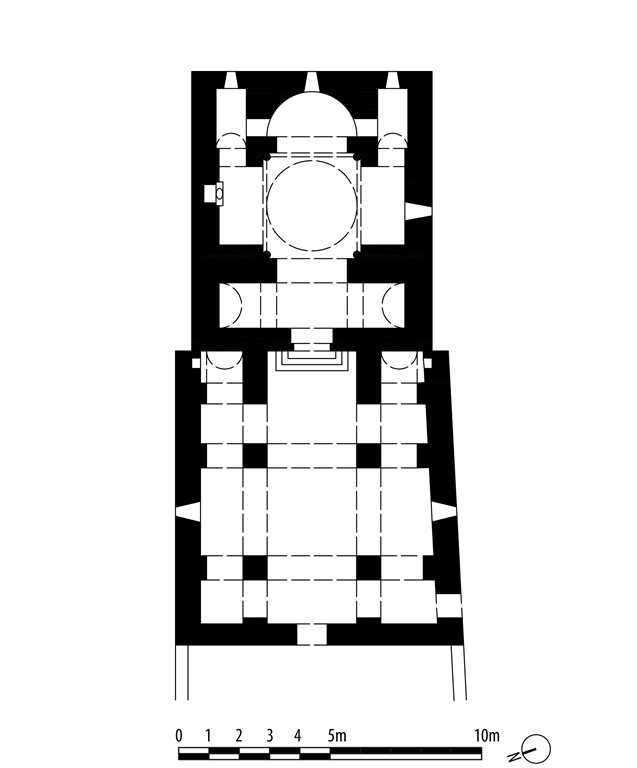This monastery is located in the Armenian canton of Mius Ichayr, at 38° 12’ N and 42° 21’ E, in the high valley – known as Paritzor or Paretzor – of a tributary of the Khizan [Hizan] River, upstream from the old town of Khizan and southwest of the new town [Yeni Hizan, Karasu], not far from the villages of P‘alassar, Shen and Prunts [Gökçimen].
The monastery’s foundation goes back to the beginning of the 11th century, at the time of the Ardzrunid principality of Mogs: the date 1041was carved into the walnut door of the church. The monastery is mentioned in 1421 with reference to the martyrdom in Khizan of two Ethiopian monks, whose remains would be laid there. It is cited again in 1425, and several more times until 1663, on the occasion of the production or reception of manuscripts. It seems to have been a flourishing establishment at the turn of the 17th century, in the time of its superior Garabed and of two Vartans, one a Church doctor, and the other an archbishop. This activity corresponds to the development in Khizan and the nearby monasteries of a school of copyists and illuminators, whose extant work stretches from the first quarter of the 13th century to the last quarter of the 17th, although the school reached beyond the city to encompass in particular the monastery workshops of Saint Gamaliel and the Holy Cross of Khizan (n° 25). In the 19th century, the monastery was most often mentioned as the monastery “of the Seven Altars” (Yôt‘n Khoran), referring to the number of altars in the church and its narthex, the three principal altars being located in the body of the apse and dedicated to the Mother of God, to Saint Sergius and to Saint Mercurius. Paritzor’s church of the Holy Mother of God was plundered in the 1870s and again during the massacres of 1895. In 1901 in the wake of this devastation, the religious community being already dispersed, the conduct of worship was entrusted to the secular priest, Apraham Markarian, while an elected council was charged with managing the monastery lands and woods.

Coupole, 2011 (Coll. Maguesyan)
The Paritzor monastery includes:
• The church of the Holy Mother of God, built in the first half of the 11th century on a tri-apsidial cross-in-square plan and measuring 9.5 × 8.2 m, with a dome and central apse, decorated inside with apparent bricks, dihedral pillars, with two deep lateral niches set into the west wall which house two altars; an inscription no longer visible attributed the construction, or more likely the restoration, to the monk Garabed;
• A narthex measuring 9,8 m in length extending directly out from the monument, of equal width to the west but measuring 9,2 m to the east, with four central columns and a dome, added to the west wall of the church at a later date and against which are set, on either side of the stairs leading to the church, two vaulted niches with two more altars;
• Monastery buildings.

Plan (Thierry, 1989, 375)
Confiscated after the Great War, the monastery was in relatively good condition in 1972. The narthex, whose roof had disappeared, had been re-roofed with branches and earth. In 2012 the church was being used as a stable.
Oskian, 1940-1947, III [1947], 839-843. Kurdian, 1951, 80 et passim . Thierry, 1989, 373-376. Devgants, 1991 173, 229.